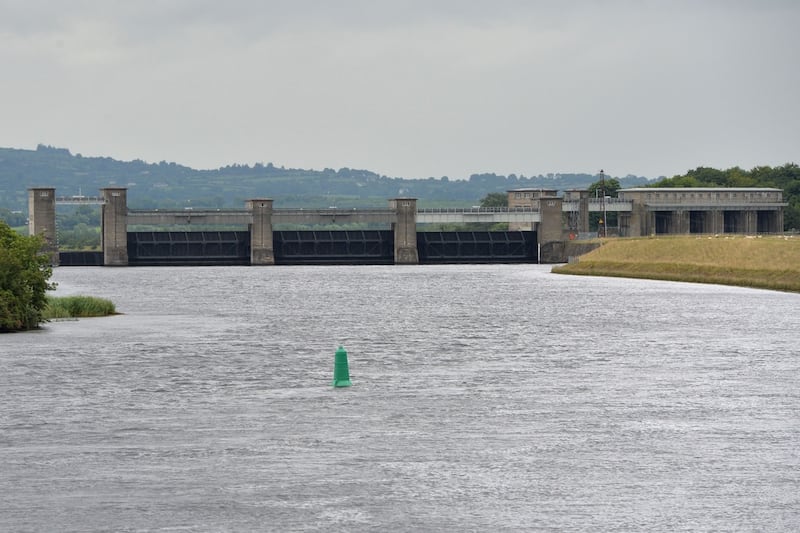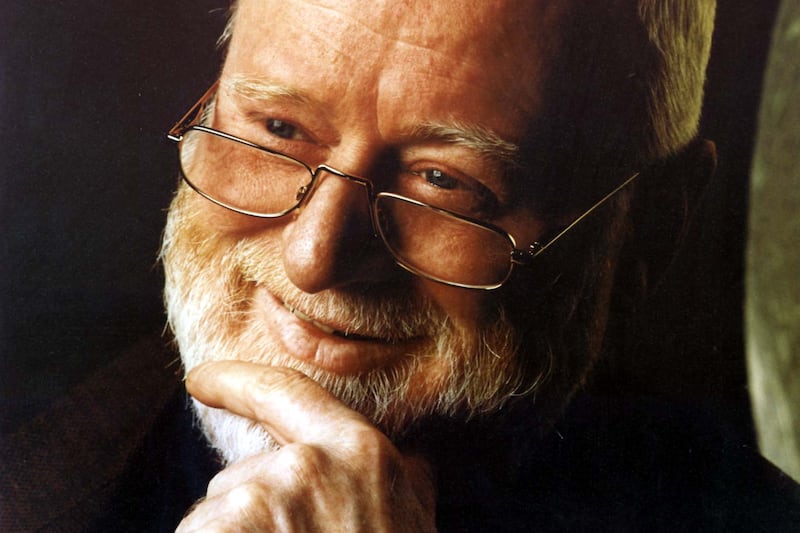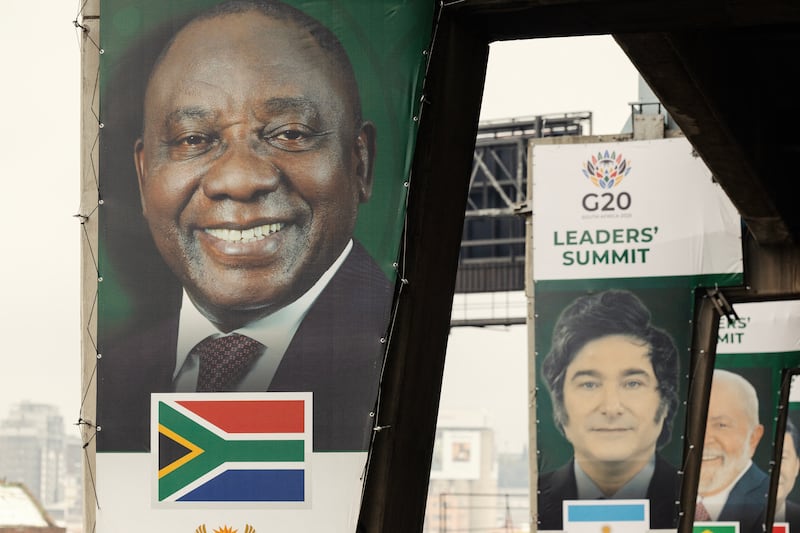Parc du Souvenir: Stephen Brandes
Oonagh Young Gallery, Dublin
****
Stephen Brandes relates that he invented a kind of fictional alter ego, Alfred Sitzfleisch, five years ago. In Parc du Souvenir, a compressed version of an exhibition he made last year for the Talbot Rice Gallery at the university of Edinburgh, two Sitzfleisch episodes, Sitzfleisch Recalls and Sitzfleisch Reflects, are rolled into one video work, together with a range of associated material including a large-scale drawing on vinyl. Vinyl drawings are Brandes's signature pieces. Working with permanent marker and acrylic, he has devised a means of making sprawling visual narratives, rather like composite engravings.
In the past he has reflected on his own family history, usually with an eye to the strange and incongruous: exile, migration, the role of chance, the business of settling and starting a new life, questions of identity and belonging. His recipe this time around is quite complex, but it’s important to say that the work itself is not. The video lopes along to a percussive soundtrack and the vinyl drawing is extremely engaging.
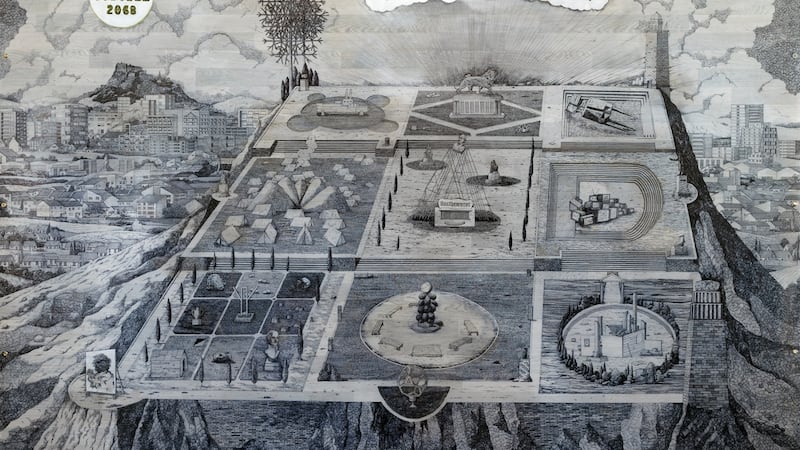
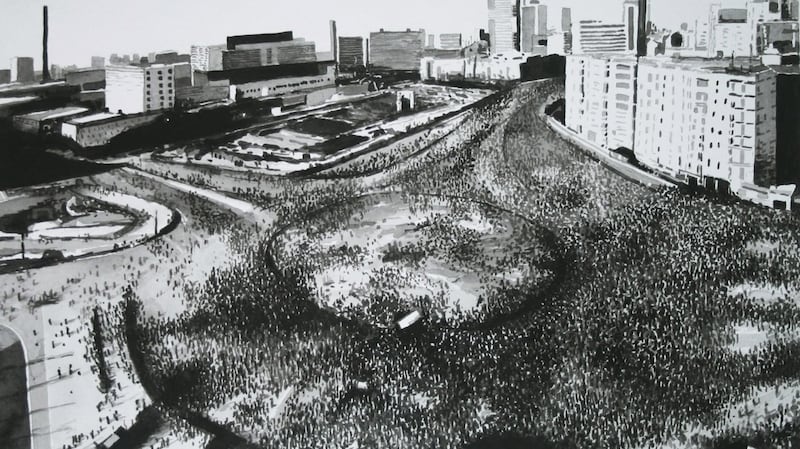
From the vantage point of a future date, 2068, Sitzfleisch muses on two unconnected individuals, pioneering town planner Patrick Geddes and the writer Gunter Grass, both of who were exceptionally diverse in their interests and activities. But then Johann Wolfgang Goethe also comes substantially into it. As he travels in Europe, the restless Sitzfleisch (whose name translates as an ability to sit still) imagines crossing paths with Geddes and Grass. Underlying everything is the notion of the waxing and waning of Enlightenment values. Brandes describes his process as “cerebral attic clearance”.
The Parc of the title is inspired by an unrealised Geddes design for a garden. Brandes's garden is a compendium of society's broken dreams and vain hopes. The flexibility of his approach allows him to move seamlessly from the domestic and personal to the historical and philosophical.
Collage is central to both drawing and video. The latter recalls the literary form largely invented by WG Sebald: a mixture of reflection, memoir, history, fiction, theory and documentary images. As video, the mode of shaping the material, in its use of image, text and music, is close to the work of Elizabeth Price – at a much slower pace. It’s not clear if either is an actual, conscious influence, but both would count as good, appropriate influences.
Brandes seems to relish his enhanced freedom to draw in and set in motion myriad ideas. Who knows where it will all lead him next, but it will be worth going along for the trip.
- Until February 24
[ oonaghyoung.comOpens in new window ]
Shot Crowd: Joy Gerrard
RHA Gallagher Gallery, Dublin
****
Joy Gerrard’s Shot Crowd is a development in her ongoing exploration of the spectacle of the crowd. As a subject it points to inherent instability, unpredictability and ambiguity. Depending on the circumstances, a crowd might reassure or terrify. Even in solidarity there can be a lurking unease.
From the mid-19th century onwards, Charles Mackay's Extraordinary Popular Delusions and the Madness of Crowds gave crowds a bad name. The French "canaille" is a mob, a violent rabble in search of a victim – a recurrent motif in European literary and cinematic fiction.
More recently, business writer James Surowiecki took a different view in his optimistic 2004 book the Wisdom of Crowds, arguing that the mass can generate a greater, collective intelligence.
Gerrard's project had its beginnings in work created from 2006 for a 2010 exhibition at the Millennium Court Arts Centre in Portadown, Space, Fear and the Multitude. It's worth mentioning that Facebook had then fairly recently appeared on the scene, and by the time the exhibition came about, social media was becoming a serious force in the world, changing the nature of mass behaviour in ways that are still unfolding.
Gerrard took images of vast gatherings of people in urban settings and reworked them as ink drawings, evoking news coverage and, more ominously, surveillance footage. The reasons for the gatherings included instances of protest, worship and refuge with, for example, protesters in Beruit and pilgrims at Mecca, and people seeking shelter in New Orleans after Hurricane Katrina.
The amorphous masses of people echoed her ink drawings of storm clouds, also included, along with what might be termed a sketch, or maquette, for a film, Shot Crowd, in which masses of individuals teem through built spaces, accumulating and dispersing.
That film, refined and remade last year, is at the RHA, and is terrific to look at, together with a more recent series of ink drawings of crowds. They are greatly scaled up from the Portadown work, which remained tied to the scale of largish photographic prints.
Looking back, it could well have been that her work had an almost retrospective quality, recalling a time of mass gatherings. Actually it picked up on the beginnings of a whole new era and now seems prescient. In looking for instances of mass protest since, she has been spoiled for choice: the spread of the Arab Spring, the Occupy protests, Ukraine, Black Lives Matter, anti-Trump gatherings and many more.
Why the medium of ink drawing and not recycled documentary imagery? There seems to be no obvious answer, but right away the monochrome images are effective and quite beautiful to look at. As an artistic precursor there is Louis le Brocquy, whose ink drawings for The Táin, published by Liam Miller in 1967, denote the surging masses of armies with myriad calligraphic markings.
It is somehow appropriate that each unit in the mass in Gerrard’s drawings, that is each human presence, is tied to the gesture of a mark, and the overall images are on a human scale.
Just as it is appropriate that the images are not instantaneous and photographic, but slowly, carefully and patiently made by means of human labour.
Until March 26, rhagallery.ie














